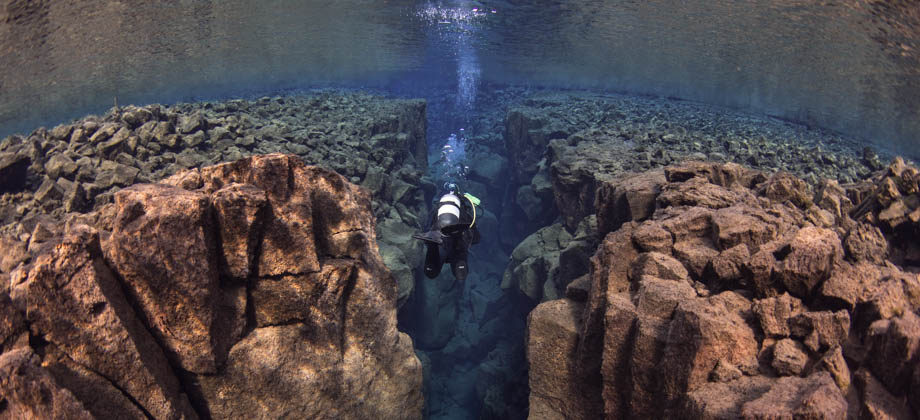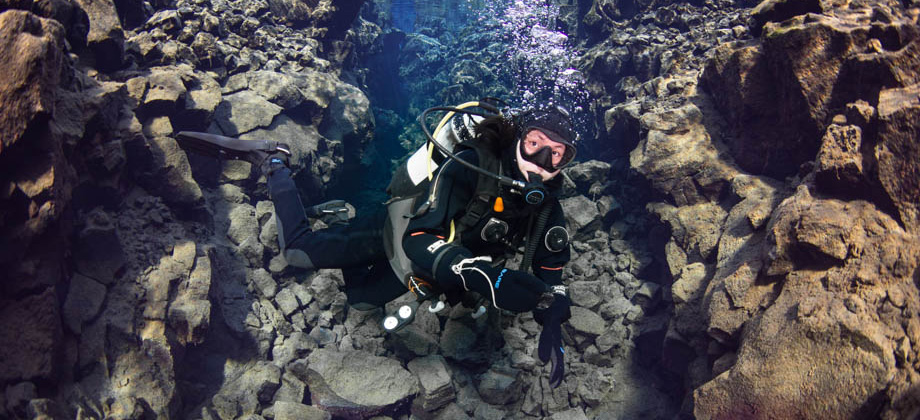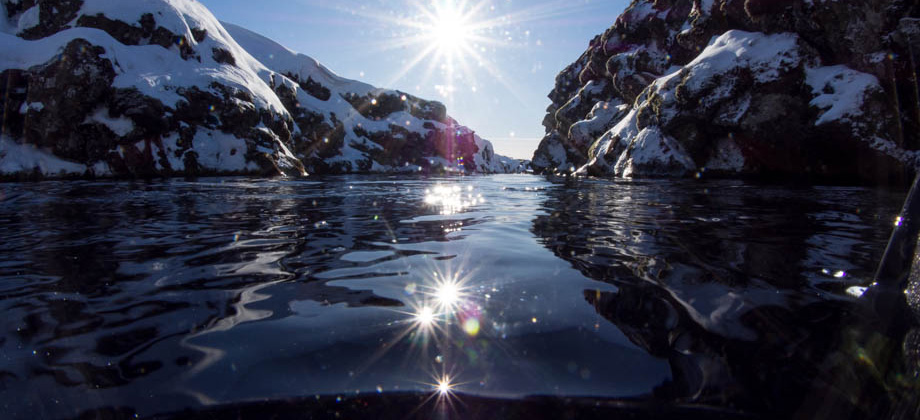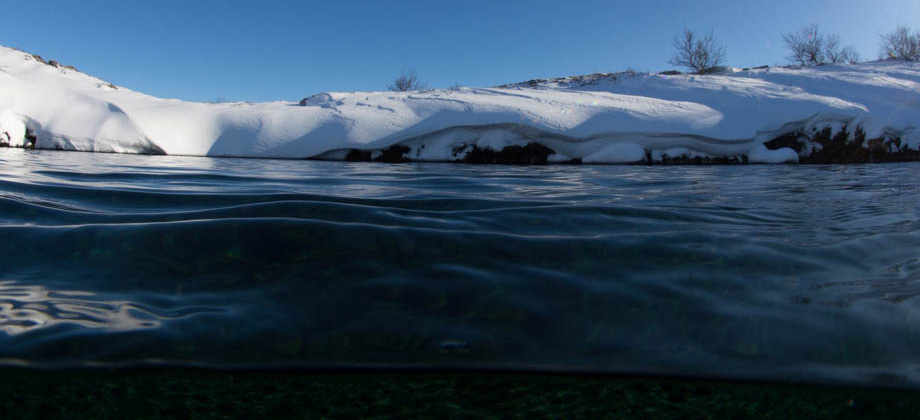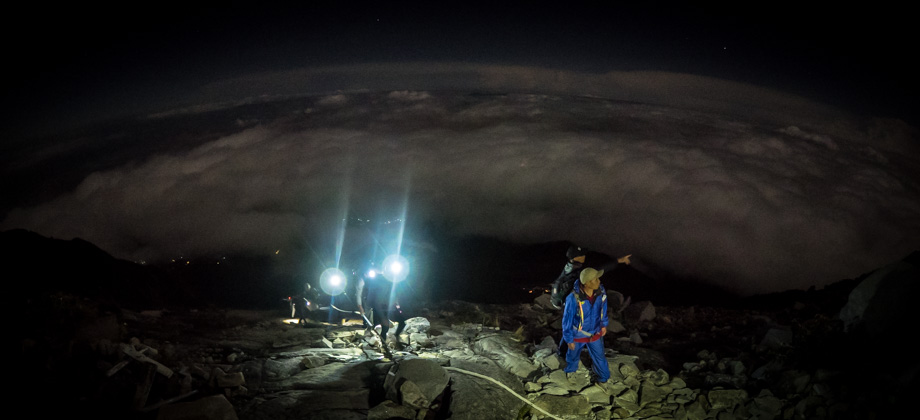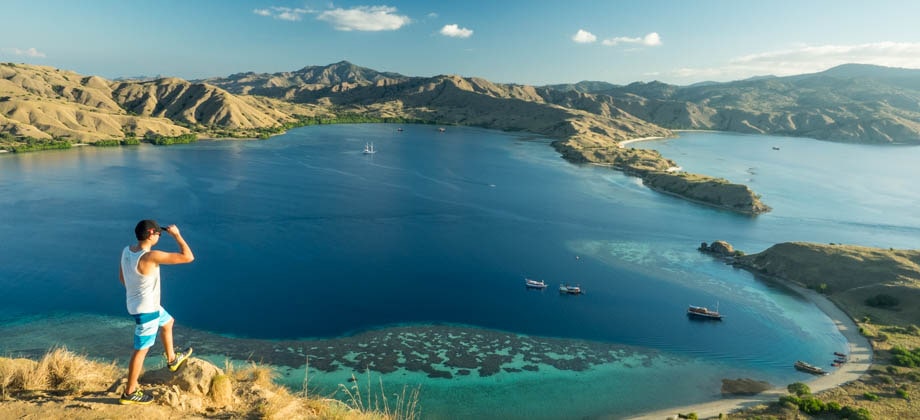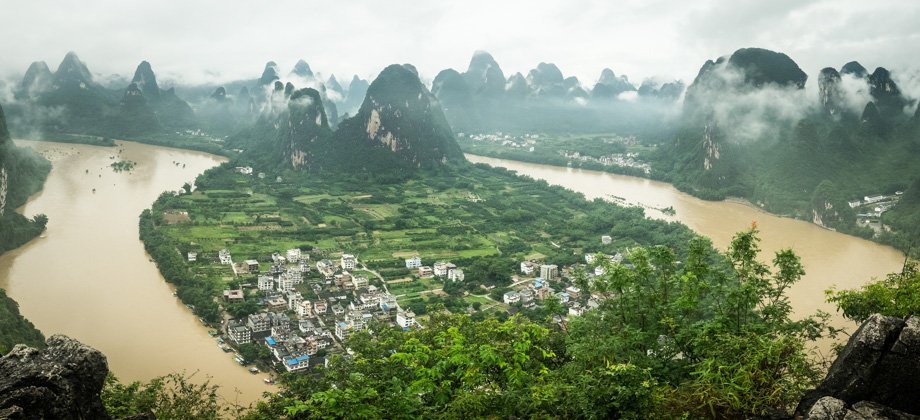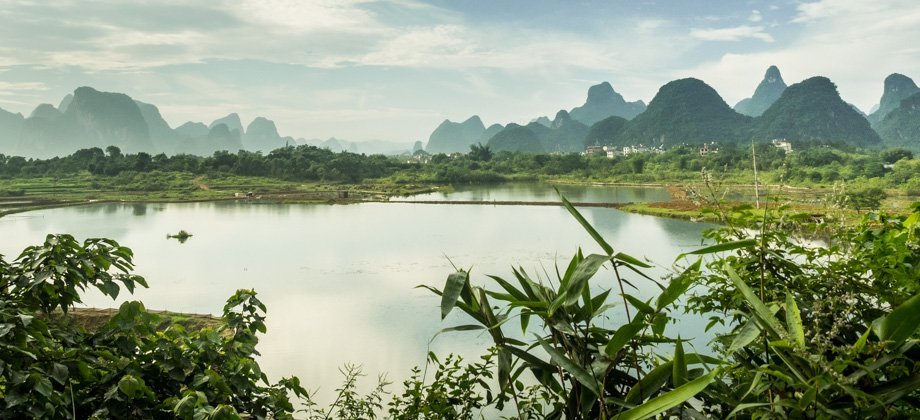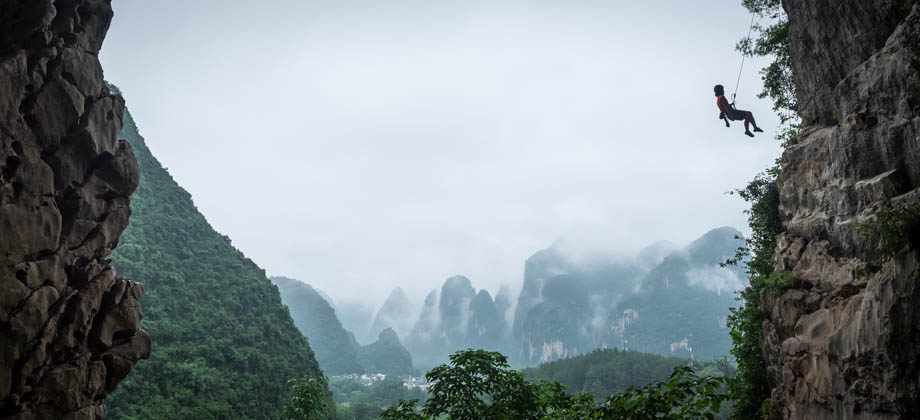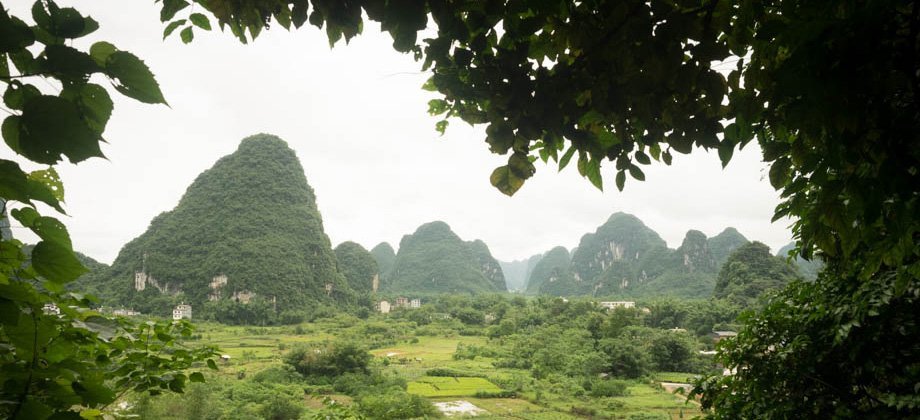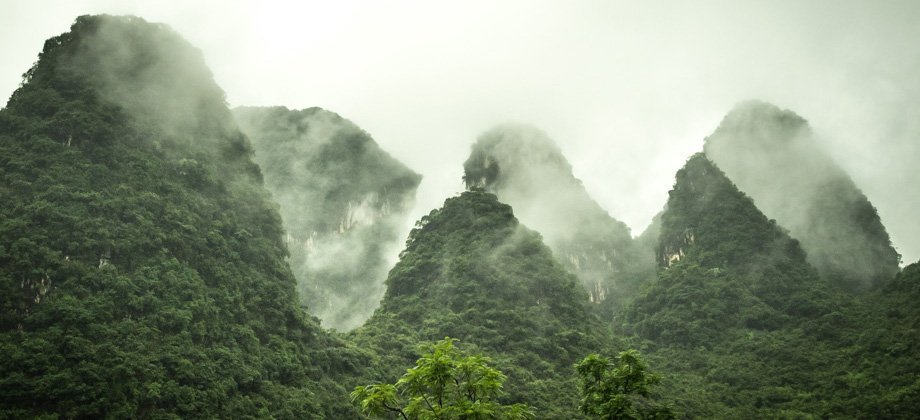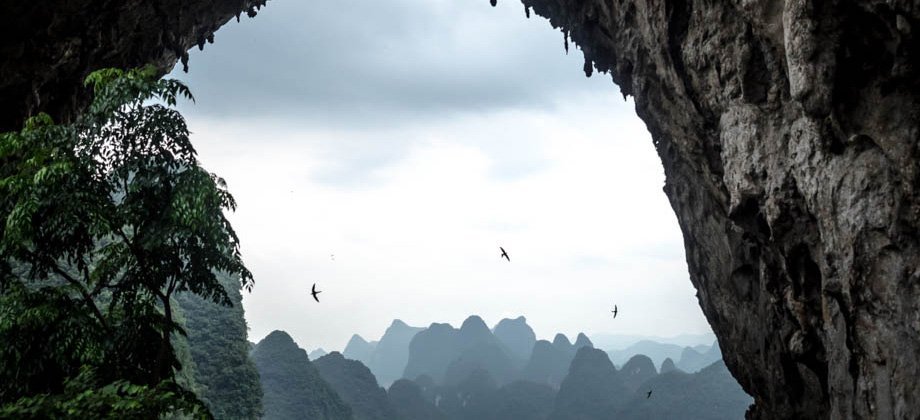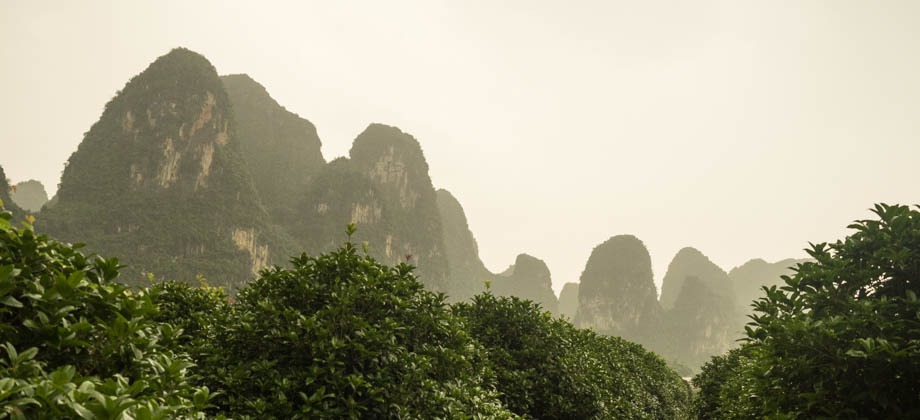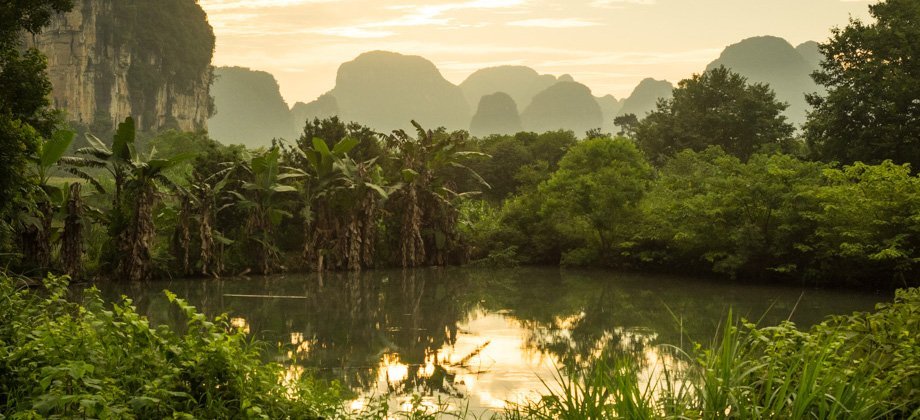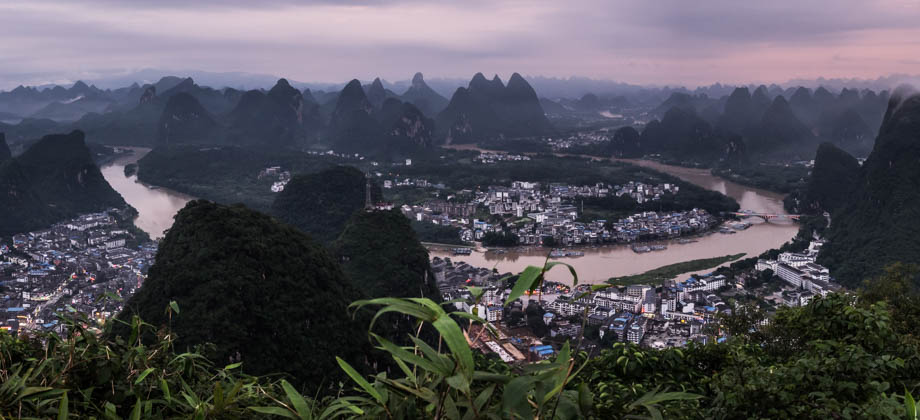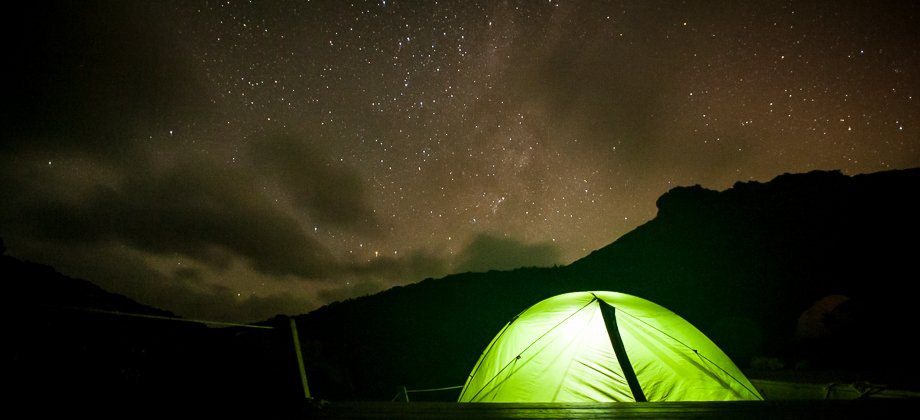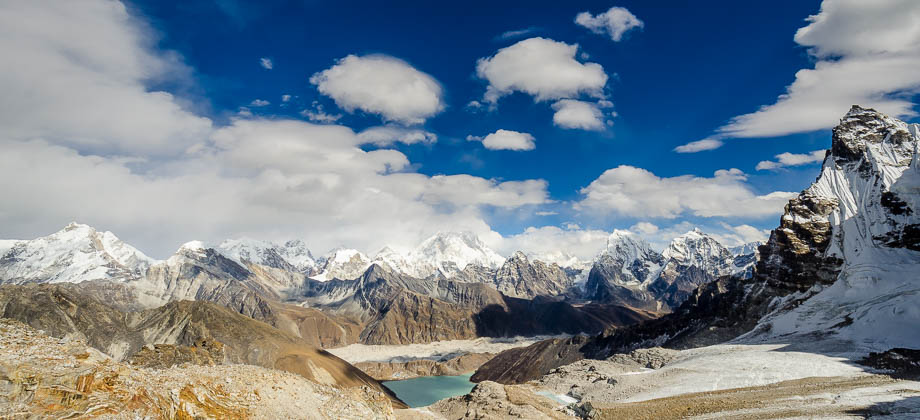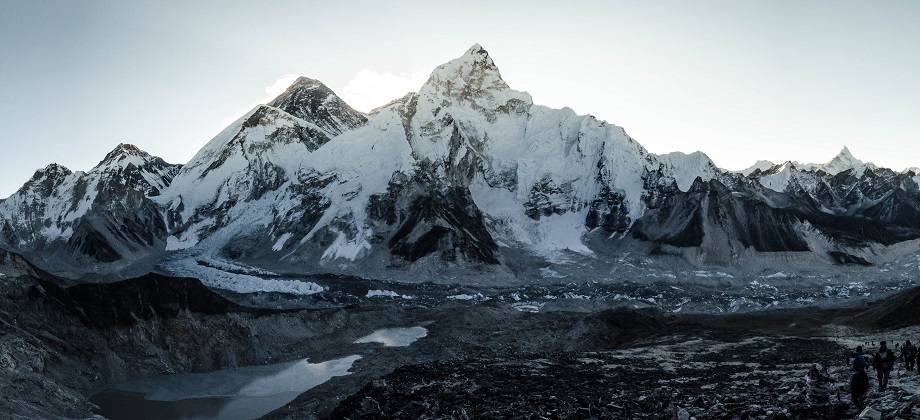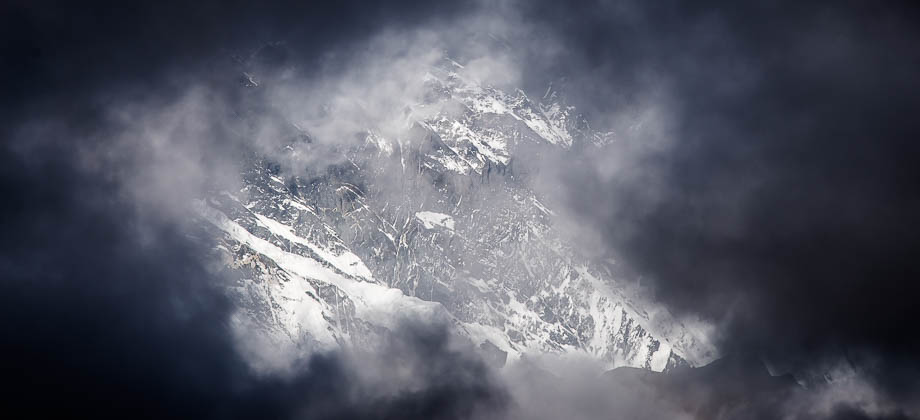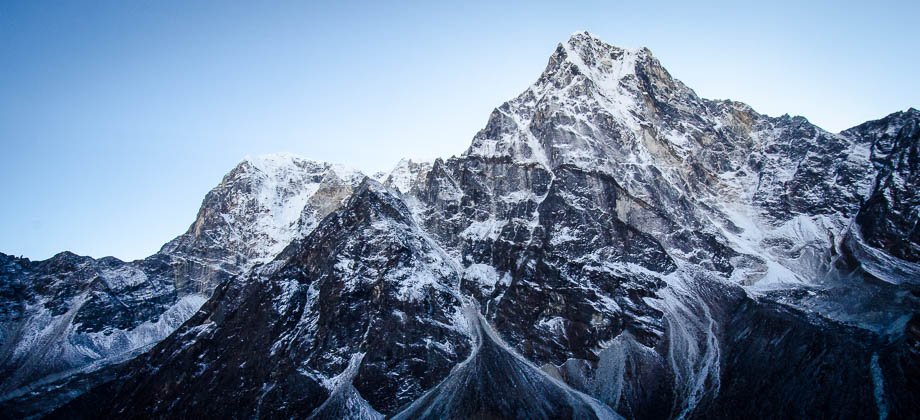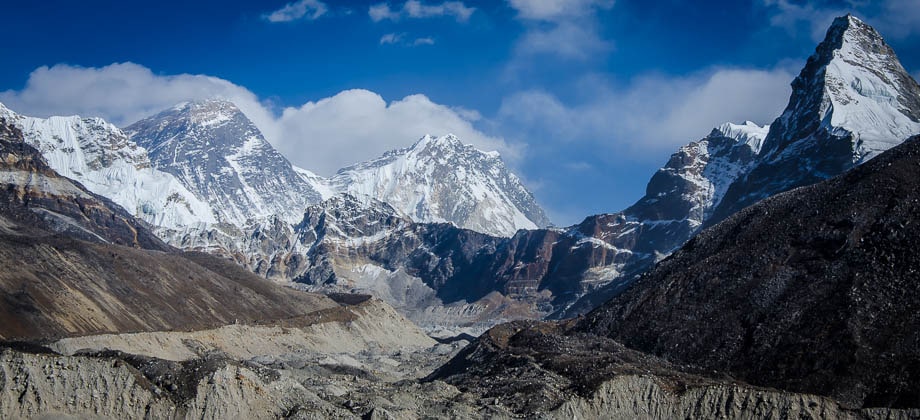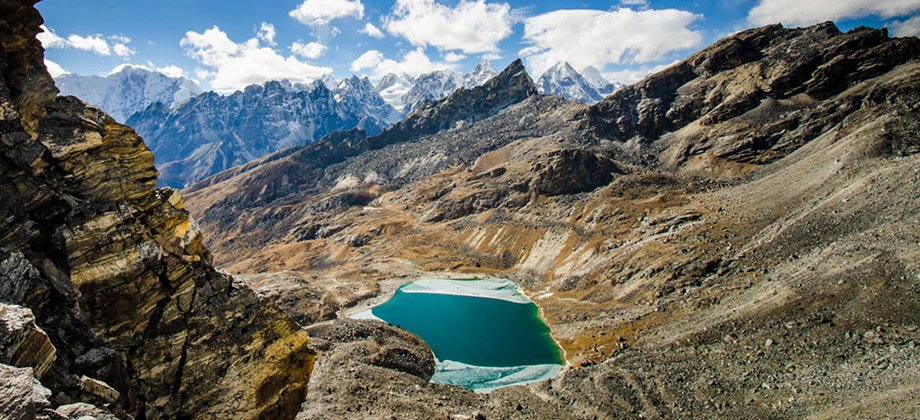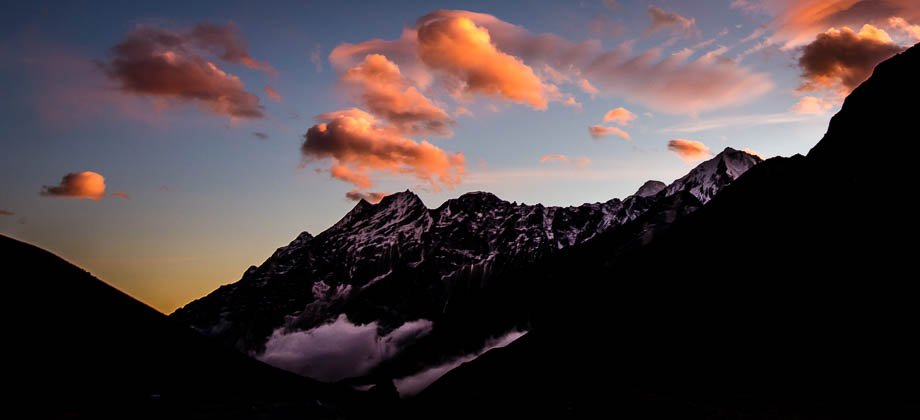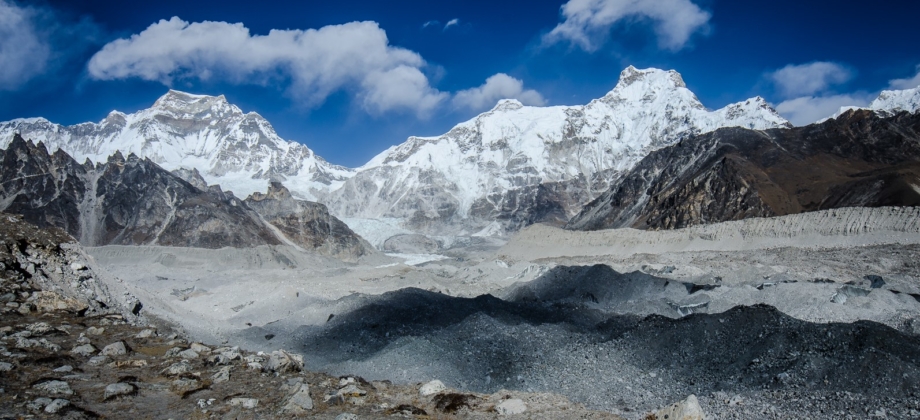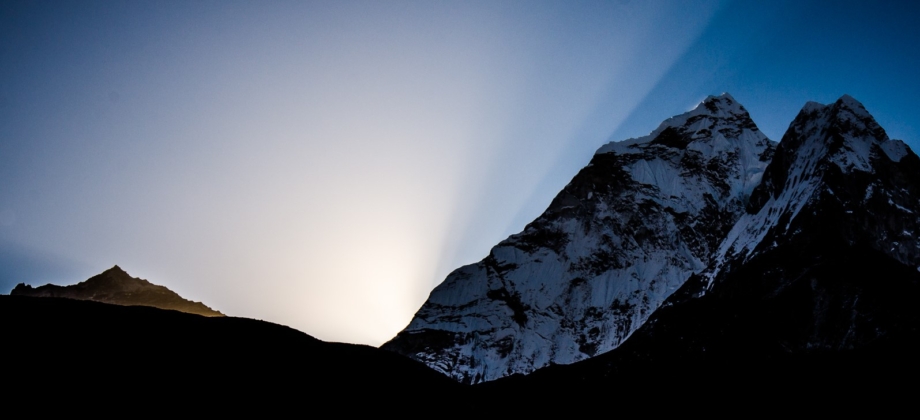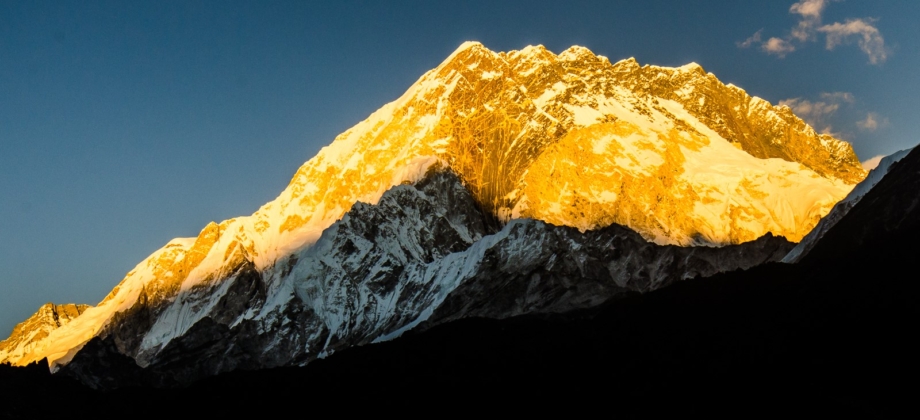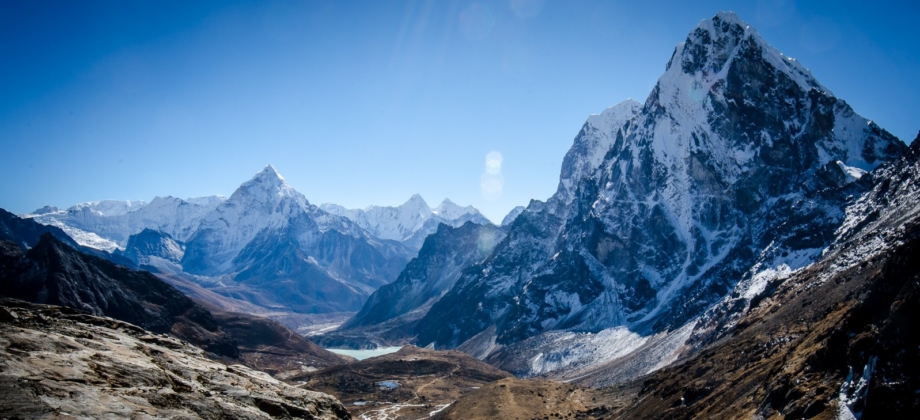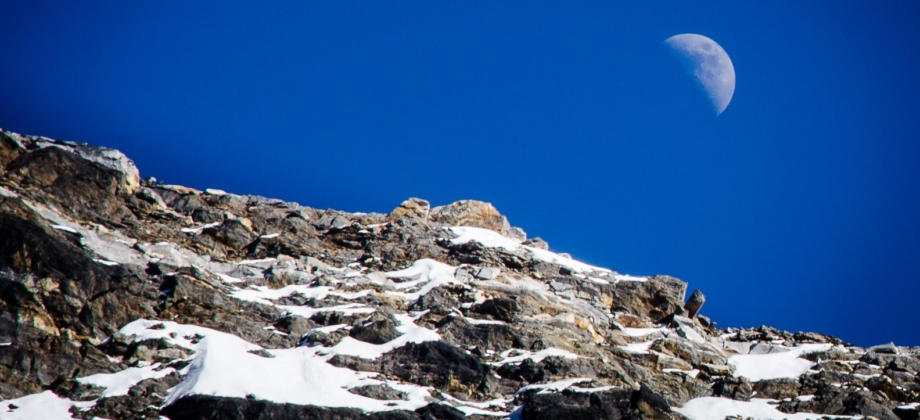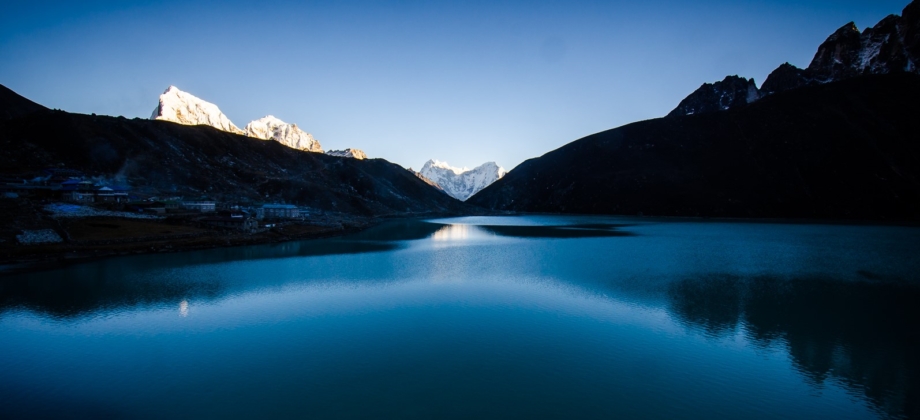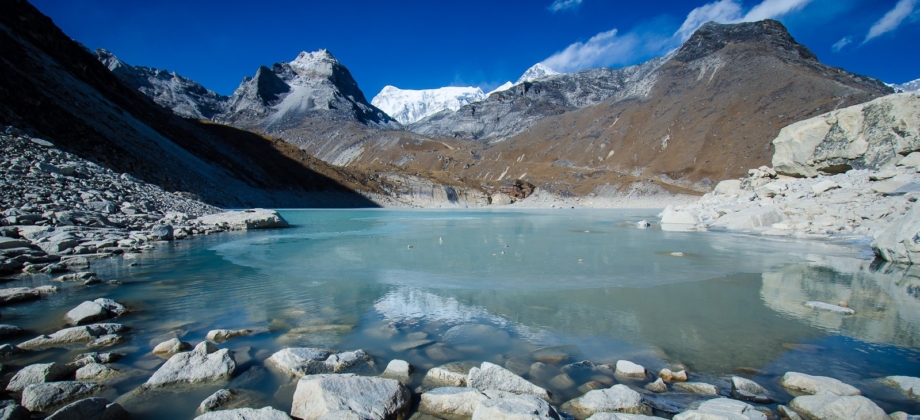
Silfra Fissure is known to scuba divers the world over for the incredible visibility of its glacial meltwater. The fissure, like Nesgjá

in the north of Iceland, is located on the tectonic plate boundary of the Mid-Atlantic Ridge. Silfra is also a site that can be accessed throughout the year, as the temperature of the water does not fluctuate by much and remains between 2 to 4 °C. During winter, snow-cover in Iceland is usually quite heavy, and
hiking paths are closed off for safety.
view more

Lanzarote is an oceanic volcanic island of the Canary Islands archipelago, and is located only 125 kilometres off the coast of Africa. Despite this, the Canary Islands are an autonomous community of
Spain, and along with the archipelagos of the Azores, Madeira, and Cape Verde, make up the region known as Macaronesia. Lanzarote stands out from the the other Canary Islands, however, as the combination of its arid, semi-desert landscape, the predominating passat winds (trade winds),
view more

Mount Kinabalu (
elevation : 4095m) is the highest mountain in
Malaysia (both by
prominence as well as sheer
elevation), and is also the highest mountain between the Himalayas and New Guinea. Based on topographic prominence, Mount Kinabalu also happens to be the
20th highest mountain in the world, but only the third highest mountain in Southeast Asia behind Hkakabo Razi in
Myanmar, and
Puncak Jaya, also known as Carstensz Pyramid
view more

The volcanic island of Komodo (along with Padar, Rinca and an archipelago of smaller islands) is a part of Komodo National Park, an area that was founded in 1980 and declared a UNESCO World Heritage Site in 1991. The national park was formed to protect, and is an eponym of, its most famous denizen--the mighty Komodo dragon (
Varanus komodoensis), the world's largest and most dangerous lizard.
view more

Yangshuo (Mandarin: 阳朔) is a
UNESCO World Heritage Site that is well-known for the thousands of karst peaks that seem to have suddenly erupted from the flat plains that surround them. Unique karst landscapes like this are produced when soluble rocks (200 million-year-old limestone in this case) are dissolved by the carbonic acid that is present in rainfall. Normally, just caverns and fissures are produced, but when the surrounding bedrock is also removed, tall limestone towers remain.
view more

The Western Arthur Range lies in Southwest National park, in Southwest Tasmania, and is one of the most dramatic mountain
ridges in the whole of Australia. This
UNESCO World Heritage Site is known for its glaciated landscapes, jagged quartzite crags, spectacular lakes (approximately 30 of them, and along with the peaks and ridges, were named after celestial objects), unpredictable and violent weather, and of course the magnificent views!
view more

The
Everest Base Camp Trek (commonly refered to as 'EBC) is considered one of the world's classic treks and takes one to the foot of the highest mountain in the world, Mount Everest (
elevation : 8848m). The trek takes at least two weeks with several days of acclimatisation stops, and passes through the world's highest mountain range, the Himalayas. Trekking amongst 'eight-thousanders' provides one with some incredible views.
view more
 Silfra Fissure is known to scuba divers the world over for the incredible visibility of its glacial meltwater. The fissure, like Nesgjá
Silfra Fissure is known to scuba divers the world over for the incredible visibility of its glacial meltwater. The fissure, like Nesgjá  Lanzarote is an oceanic volcanic island of the Canary Islands archipelago, and is located only 125 kilometres off the coast of Africa. Despite this, the Canary Islands are an autonomous community of Spain, and along with the archipelagos of the Azores, Madeira, and Cape Verde, make up the region known as Macaronesia. Lanzarote stands out from the the other Canary Islands, however, as the combination of its arid, semi-desert landscape, the predominating passat winds (trade winds), view more
Lanzarote is an oceanic volcanic island of the Canary Islands archipelago, and is located only 125 kilometres off the coast of Africa. Despite this, the Canary Islands are an autonomous community of Spain, and along with the archipelagos of the Azores, Madeira, and Cape Verde, make up the region known as Macaronesia. Lanzarote stands out from the the other Canary Islands, however, as the combination of its arid, semi-desert landscape, the predominating passat winds (trade winds), view more
 Mount Kinabalu (elevation : 4095m) is the highest mountain in Malaysia (both by prominence as well as sheer elevation), and is also the highest mountain between the Himalayas and New Guinea. Based on topographic prominence, Mount Kinabalu also happens to be the 20th highest mountain in the world, but only the third highest mountain in Southeast Asia behind Hkakabo Razi in Myanmar, and Puncak Jaya, also known as Carstensz Pyramid view more
Mount Kinabalu (elevation : 4095m) is the highest mountain in Malaysia (both by prominence as well as sheer elevation), and is also the highest mountain between the Himalayas and New Guinea. Based on topographic prominence, Mount Kinabalu also happens to be the 20th highest mountain in the world, but only the third highest mountain in Southeast Asia behind Hkakabo Razi in Myanmar, and Puncak Jaya, also known as Carstensz Pyramid view more
 The volcanic island of Komodo (along with Padar, Rinca and an archipelago of smaller islands) is a part of Komodo National Park, an area that was founded in 1980 and declared a UNESCO World Heritage Site in 1991. The national park was formed to protect, and is an eponym of, its most famous denizen--the mighty Komodo dragon (Varanus komodoensis), the world's largest and most dangerous lizard. view more
The volcanic island of Komodo (along with Padar, Rinca and an archipelago of smaller islands) is a part of Komodo National Park, an area that was founded in 1980 and declared a UNESCO World Heritage Site in 1991. The national park was formed to protect, and is an eponym of, its most famous denizen--the mighty Komodo dragon (Varanus komodoensis), the world's largest and most dangerous lizard. view more
 Yangshuo (Mandarin: 阳朔) is a UNESCO World Heritage Site that is well-known for the thousands of karst peaks that seem to have suddenly erupted from the flat plains that surround them. Unique karst landscapes like this are produced when soluble rocks (200 million-year-old limestone in this case) are dissolved by the carbonic acid that is present in rainfall. Normally, just caverns and fissures are produced, but when the surrounding bedrock is also removed, tall limestone towers remain. view more
Yangshuo (Mandarin: 阳朔) is a UNESCO World Heritage Site that is well-known for the thousands of karst peaks that seem to have suddenly erupted from the flat plains that surround them. Unique karst landscapes like this are produced when soluble rocks (200 million-year-old limestone in this case) are dissolved by the carbonic acid that is present in rainfall. Normally, just caverns and fissures are produced, but when the surrounding bedrock is also removed, tall limestone towers remain. view more
 The Western Arthur Range lies in Southwest National park, in Southwest Tasmania, and is one of the most dramatic mountain ridges in the whole of Australia. This UNESCO World Heritage Site is known for its glaciated landscapes, jagged quartzite crags, spectacular lakes (approximately 30 of them, and along with the peaks and ridges, were named after celestial objects), unpredictable and violent weather, and of course the magnificent views! view more
The Western Arthur Range lies in Southwest National park, in Southwest Tasmania, and is one of the most dramatic mountain ridges in the whole of Australia. This UNESCO World Heritage Site is known for its glaciated landscapes, jagged quartzite crags, spectacular lakes (approximately 30 of them, and along with the peaks and ridges, were named after celestial objects), unpredictable and violent weather, and of course the magnificent views! view more
 The Everest Base Camp Trek (commonly refered to as 'EBC) is considered one of the world's classic treks and takes one to the foot of the highest mountain in the world, Mount Everest (elevation : 8848m). The trek takes at least two weeks with several days of acclimatisation stops, and passes through the world's highest mountain range, the Himalayas. Trekking amongst 'eight-thousanders' provides one with some incredible views. view more
The Everest Base Camp Trek (commonly refered to as 'EBC) is considered one of the world's classic treks and takes one to the foot of the highest mountain in the world, Mount Everest (elevation : 8848m). The trek takes at least two weeks with several days of acclimatisation stops, and passes through the world's highest mountain range, the Himalayas. Trekking amongst 'eight-thousanders' provides one with some incredible views. view more

